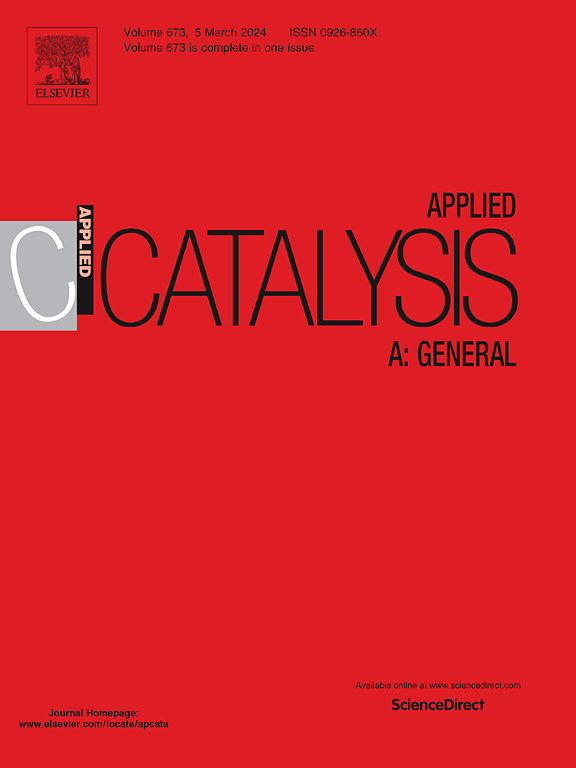高活性金纳米粒子封装在非晶氧化硅中用于CO氧化
IF 4.8
2区 化学
Q2 CHEMISTRY, PHYSICAL
引用次数: 0
摘要
包裹在非晶氧化硅(18Au@SiO2_H2)中的金纳米颗粒在很宽的温度范围内(从203到673 K)表现出很高的CO氧化催化活性。催化剂的表征表明,微带正电的金纳米颗粒与非晶氧化硅之间存在强烈的相互作用,这是高催化活性的原因。采用不同浓度的HAuCl4前驱体和不同的还原剂制备了金纳米颗粒催化剂,比较了上述参数对催化活性的影响。HAuCl4前驱体浓度增加,pH值降低;反过来改变了氧化硅的形状,甚至在支撑物中保留了碳氢基团。以2.0 % HAuCl4aq制备的18Au@SiO2_H2催化剂具有最佳载体,表明CO氧化反应机理的变化取决于氧化硅的形状。该催化剂在较宽的温度范围内保持高活性。本文章由计算机程序翻译,如有差异,请以英文原文为准。
Highly active gold nanoparticles encapsulated in amorphous silicon oxide for CO oxidation
Gold nanoparticles encapsulated in amorphous silicon oxide (18Au@SiO2_H2) exhibit high catalytic activity for CO oxidation over a wide temperature range (from 203 to 673 K). Characterizations of the catalysts revealed strong interactions between slight positively charged gold nanoparticles and amorphous silicon oxide, which are responsible for the high catalytic activity. Gold nanoparticle catalysts prepared using different concentrations of the HAuCl4 precursor and different reducing agents have been compared to determine the effects of the above parameters on the catalytic activity. Increase in the concentration of HAuCl4 precursor, decreases the pH; in turn changes the shape of the silicon oxide even on retention of hydrocarbon groups in supports. 18Au@SiO2_H2 catalyst prepared with 2.0 % HAuCl4aq was found to have the optimal support, in suggesting the change in the reaction mechanism of CO oxidation depends on the shape of the silicon oxide. This catalyst maintained high activity over a wide temperature range.
求助全文
通过发布文献求助,成功后即可免费获取论文全文。
去求助
来源期刊

Applied Catalysis A: General
化学-环境科学
CiteScore
9.00
自引率
5.50%
发文量
415
审稿时长
24 days
期刊介绍:
Applied Catalysis A: General publishes original papers on all aspects of catalysis of basic and practical interest to chemical scientists in both industrial and academic fields, with an emphasis onnew understanding of catalysts and catalytic reactions, new catalytic materials, new techniques, and new processes, especially those that have potential practical implications.
Papers that report results of a thorough study or optimization of systems or processes that are well understood, widely studied, or minor variations of known ones are discouraged. Authors should include statements in a separate section "Justification for Publication" of how the manuscript fits the scope of the journal in the cover letter to the editors. Submissions without such justification will be rejected without review.
 求助内容:
求助内容: 应助结果提醒方式:
应助结果提醒方式:


